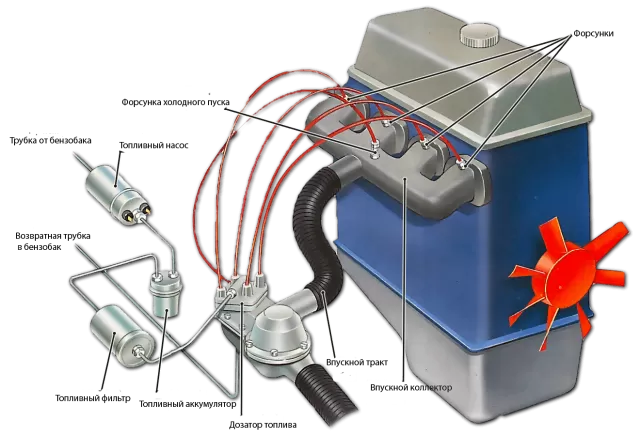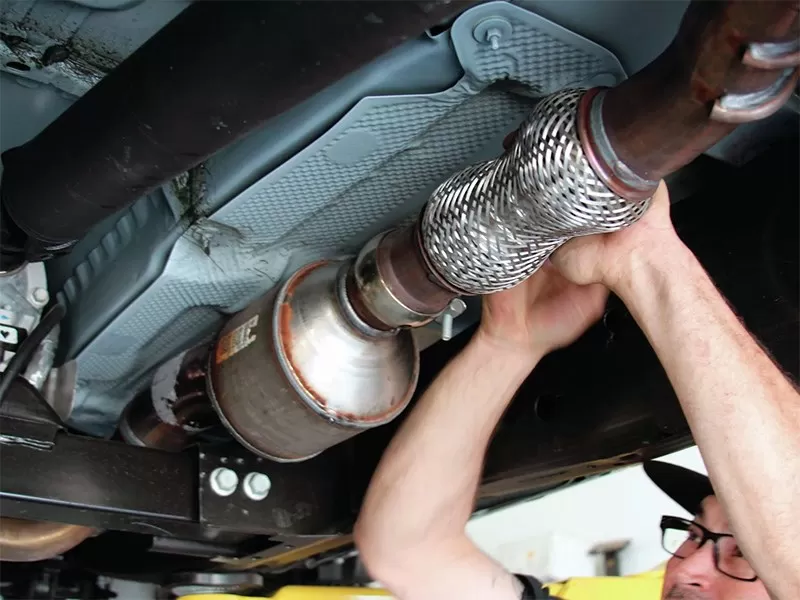
How does fuel injection work?
Content
When it comes to engine performance, there are few things more important than fuel delivery. All the air you can force into the cylinders won't do anything without the right amount of fuel to burn. As engines developed throughout the twentieth century, there came a point when carburetors became the weakest link in the transmission in terms of efficiency and reliability. Fuel injection has since become a standard feature in every new car.
The fuel injectors atomize the gas, providing more even and consistent ignition in the combustion chamber. Unlike carburetors, which rely on the vacuum created by the engine to deliver fuel to the cylinders, fuel injection systems accurately deliver a constant volume of fuel. Modern cars use electronic fuel injection systems that are controlled by the ECU.
The growth of fuel injection was as predictable as the rise in popularity of the cars themselves. At the turn of the 20th century, it was unbelievable for a car to reach 60 mph. At the turn of the 21st century, people were moaning at traffic jams moving down highways at just 60 miles per hour. Cars today are more reliable and more geared towards passenger comfort and safety than anyone could have imagined a century ago.
What replaced fuel injection?
Fuel injection systems were offered as upgrades to carburetors when they first appeared and remained in that role until the 1980s when they became standard equipment on every new car. Fuel injection offers a number of advantages over a carburetor, but ultimately the cost of production killed the carburetor.
For a long time, carburetors have been the easiest and cheapest way for car manufacturers to supply fuel to their engine cylinders. A series of oil shortages in the 1970s forced the government to regulate automotive fuel economy. As manufacturers needed to develop more efficient carburetor designs and produce more complex parts, the cost of producing carbureted cars became high enough that fuel injection became a more cost-effective solution.
For consumers, this was great news. Fuel-injected vehicles drive more consistently and require less maintenance and adjustments. Emissions are also easier to control and fuel economy is enhanced by more efficient fuel delivery. There are many different fuel injection systems, but they can all be divided into two categories: mechanical fuel injection and electronic fuel injection.
Electronic Fuel Injection (EFI)
Electronic fuel injection allows very precise control of the amount of fuel injected into the cylinders. It follows a fairly simple process:
Fuel exits the fuel tank through fuel pump. It goes through the fuel lines to the engine.
Slot machine fuel pressure control narrows the flow of fuel and passes only the calculated amount to the injectors.
The fuel pressure regulator knows how much fuel to pass to the injectors, according to a signal from mass air flow sensor (MAF). This sensor monitors how much air is entering the engine at any given time. The total volume of air entering the engine, together with the optimal air/fuel ratio set by the manufacturer, gives electronic control unit (ECU) enough information to calculate the exact amount of fuel the engine needs.
The fuel injectors themselves open to let the atomized gas directly into the combustion chamber or into the throttle body.
Mechanical fuel injection
Mechanical fuel injection was developed before EFI and paved the way for the development of EFI technology. The main difference between the two systems is that mechanical fuel injection systems use mechanical devices to dispense the correct amount of fuel into the engine. These systems must be tuned for optimal performance, just like carburetors, but also deliver fuel through injectors.
In addition to being more accurate, these systems did not differ much from their carbureted counterparts. However, they were extremely useful for aircraft engines. Carburettors don't work well against gravity. To cope with the g-forces generated by aircraft, fuel injection was developed. Without fuel injection, lack of fuel would cause many aircraft engines to shut down during difficult maneuvers.
Fuel injection of the future
In the future, fuel injection will become more and more precise and provide ever higher efficiency and safety. Every year engines have more horsepower and produce less waste per horsepower.
